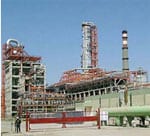INDIA

|
|
|
As the Indian economy marches strongly toward an annual 10% GDP growth rate, its inadequate infrastructure is beginning to create serious inflationary pressures (see feature, page 63). Competition for transport facilities coupled with sustained higher fuel prices has pushed food prices in urban areas higher by as much as 7% in the past few months.
The Forward Markets Commission (FMC), Indias commodity derivatives markets regulator, under pressure from a government struggling to contain escalating grain prices, banned all trade in rice and wheat futures in early March 2007 for the first time since forward trading in agricultural commodities was re-introduced in India in 2002. Other agricultural, industrial and energy derivatives continue to trade unaffected, yet investors remain concerned about the government falling for populist measures that could harm confidence in a very crucial derivatives market.
The two main Indian commodity exchanges trade everything from precious metal futures to Nymex-linked crude oil futures, gas, base metals and a host of commodities such as cotton, oilseeds, pepper and coffee. Volumes top $3 billion daily on the Indian commodity futures market.
Inflation concerns have failed to dampen corporate Indias enthusiasm for expansion, though. Reliance Industries, Indias largest private sector company by revenues, is set to get even bigger. It has announced plans to merge with Indian Petrochemicals Corporation (IPCL), the countrys second-largest petrochemicals company, of which it owns 46%. The combined entity will have revenues of $20 billion, assets worth $18.5 billion and a market capitalization of $41.5 billion (as of March 7, 2007). IPCL used to be a government-owned company, in which Reliance purchased a 26% stake in 2002 when it was privatized. The government now owns just 0.35% in IPCL. Both revenues and profitability have increased dramatically at IPCL since Reliance took it over in 2002. Reliance Industries operates the third-largest refinery in the world, processing 30 million tons per year, and is currently doubling that capacity to 60 million tons to make it the worlds largest.
Aaron Chaze



